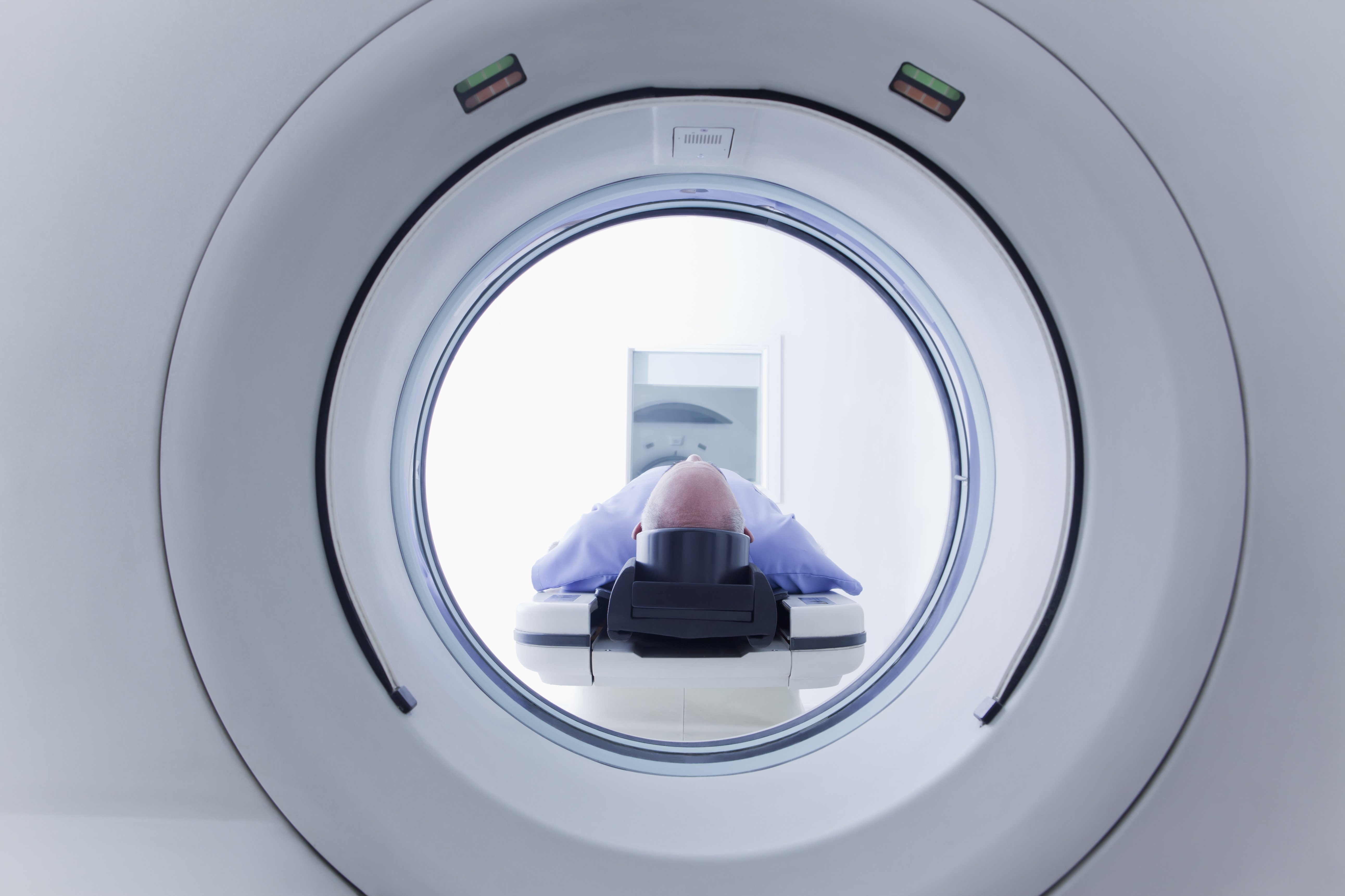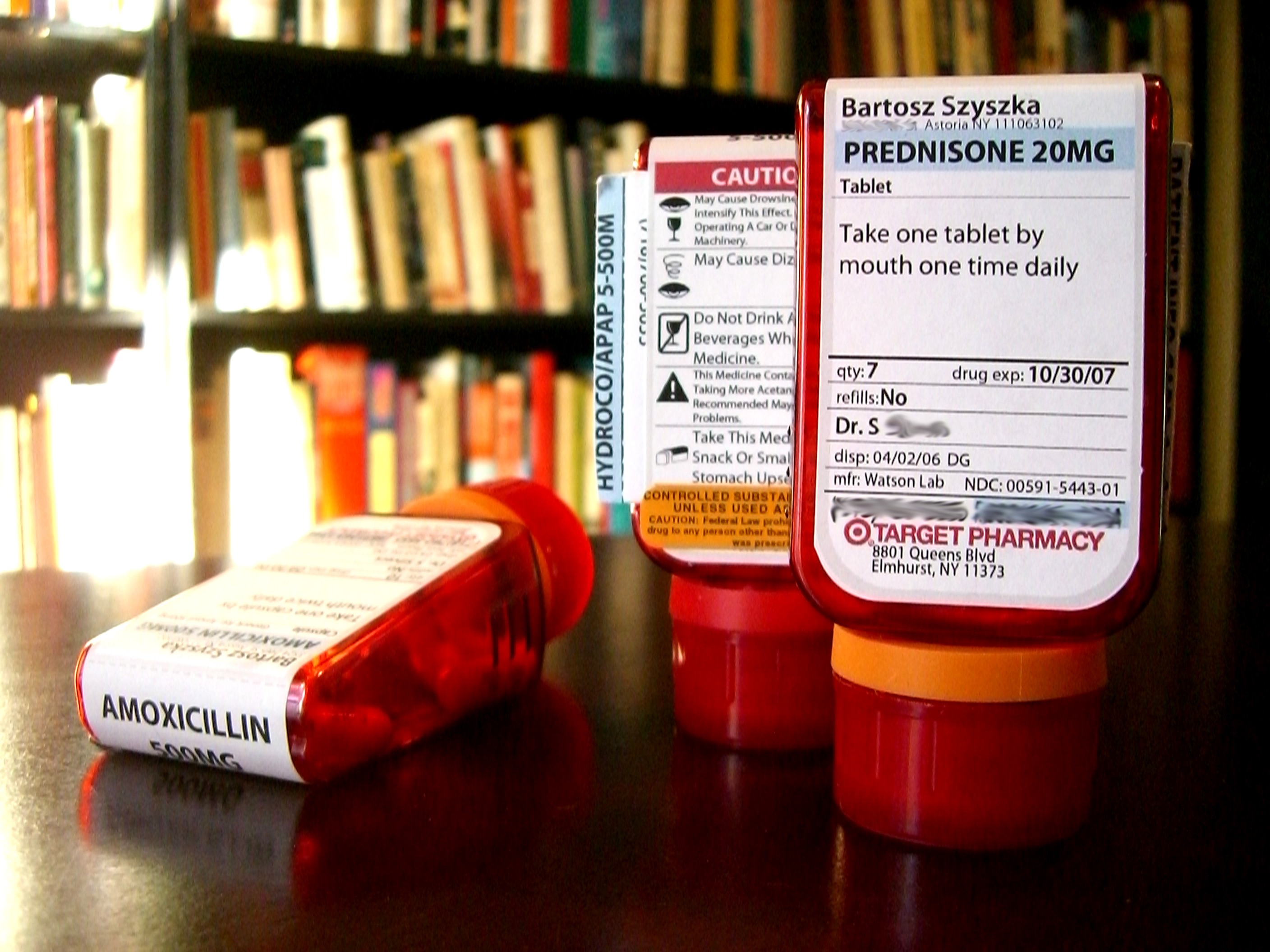20 Astonishing Ailments Prednisone Packs a Punch Against
Prednisone is a powerful prescription medication classified as a corticosteroid, widely used for its potent anti-inflammatory and immunosuppressive properties. It can be administered in various forms, including oral tablets, injections, and inhalants, depending on the condition being treated. Prednisone works by reducing immune system activity, helping to control symptoms that arise from excessive inflammation or autoimmune responses. While the immune system is essential for defending the body against infections and harmful substances, certain conditions cause it to overreact or mistakenly attack healthy tissues. In such cases, prednisone plays a crucial role in preventing unnecessary damage and alleviating symptoms like swelling, pain, and inflammation. While prednisone is a highly effective treatment, it is not without potential side effects, which may include headaches, mood changes, weight fluctuations, increased appetite, acne, dizziness, fatigue, and fluid retention. Despite these risks, when used appropriately under medical supervision, prednisone can provide significant relief for numerous health conditions. In this article, we've expanded our list to 20 conditions where prednisone packs a punch, offering a deeper look into how this versatile medication can help manage a wide range of medical issues.
1. Arthritis

Arthritis is a disease where an individual experiences inflammation in their joints and the tissues that surround them. There are approximately two hundred different conditions that may be referred to as arthritis. The most common type of arthritis is osteoarthritis, but others include rheumatoid arthritis and gout. Stiffness, pain, aching, and swelling may occur around one or more joints in an affected individual. Symptoms can develop suddenly or slowly progress over time. Treatment for arthritis has the goals of controlling pain, maintaining or improving function, and minimizing joint damage. These goals are accomplished with physical therapy, joint assistive aids, weight loss, occupational therapy, splints, education and support, surgical procedures, and medications. Some forms of arthritis require the use of medications with anti-inflammatory benefits because the condition is caused by the individual's overactive immune system. Corticosteroids like cortisone and prednisone can be used to decrease the amount of inflammation in the affected joints, throttle the individual's immune system, and stop the inflammatory process.
2. Asthma

Asthma is a long-term disease that affects the airways inside of the lungs, causing them to become swollen, inflamed, and narrow. Asthma is episodic and triggered by certain things in the environment. When triggered, the muscles that surround a patient's airways become tight and stiff, making it challenging for air to flow in and out of their lungs properly. This malfunction results in classic asthma symptoms that include wheezing, coughing, chest tightness, and shortness of breath. Asthma is categorized into different types depending on what triggers their symptoms and the underlying cause of the condition. There are three main parts of treatment for an asthma patient, including rescue or first aid treatments, long-term asthma control medications, and breathing exercises. A short course of prednisone is used in individuals who are affected by asthma and have worsening symptoms or who are experiencing an asthma attack. Prednisone is effective at helping reduce severe inflammation and swelling in the lungs.
3. Allergic Reactions

An allergic reaction is a set of symptoms that develop because the immune system has an abnormal reaction to a substance that is relatively harmless to the body. Some of the most prevalent allergens known to produce allergic reactions include peanuts, pollen, and eggs. During an allergic reaction, the immune system secretes an influx of antibodies or proteins that instruct cells to release a substance called histamine, which causes blood vessels to dilate and produces several other symptoms associated with allergies. Allergic reactions can occur when an allergen comes in contact with the nose, eyes, skin, mouth, or stomach. A severe allergic reaction that requires hospitalization in most cases is referred to as anaphylaxis. Part of the treatment of anaphylaxis is the administration of antihistamines and corticosteroids. For the immediate dangers anaphylaxis presents, corticosteroids are of little benefit. However, corticosteroid administration is important because it stops what is referred to as a late-phase reaction. Corticosteroids are also more effective for this purpose in individuals who are affected by asthma and also in an allergic crisis. Oral corticosteroids are often continued for several days following the acute allergic reaction.
4. Crohn's Disease

Crohn's disease is an inflammatory bowel disease that produces symptoms ranging from mild to debilitating. Crohn's disease can cause adverse problems in any part of an individual's digestive tract from their mouth to their anus but is most likely to occur in the colon and small intestine. Crohn's disease develops because of certain gene mutations, immune system responses, and different environmental factors. Symptoms of Crohn's disease include diarrhea, fever, fatigue, weight loss, abdominal cramps, blood in the stool, appetite loss, and frequent bowel movements. Crohn's disease does not have a cure, and no one method of treatment works for everyone affected by Crohn's disease. Treatment involves decreasing the inflammatory process that triggers symptoms. The first line of treatment in most cases of Crohn's disease is the use of anti-inflammatory drugs, including oral 5-aminosalicylates and corticosteroids. Corticosteroids help reduce the activity of a patient's immune system to reduce the Crohn's disease symptoms associated with the inflammatory process that takes place in the digestive tract.
5. Prevent Organ Rejection

Organ rejection is a process that occurs in a patient where their immune system recognizes a donor organ as being foreign and attempts to eliminate its tissues. Some degree of organ rejection occurs in every patient who receives a donor organ transplant. The clinical significance of that degree of rejection is dependent upon individual circumstances. Acute rejection is sudden and often forced back into a state of remission through the use of medications to suppress the immune system. Chronic rejection can develop as a result of several episodes of acute rejection. Organ rejection produces symptoms such as swelling, weight gain, chills, nausea, diarrhea, headache, body aches, tiredness, fever, pain over the transplant site, and less urine expulsion. Patients who have had an organ transplant need to take several medications every day to maintain proper clinical immunosuppression. Clinical immunosuppression includes the use of prednisone to help stop the immune system components from attacking the donor organ.
6. Diamond-Blackfan Anemia

Diamond-Blackfan anemia is a rare form of anemia. For patients with this condition, the bone marrow does not produce a sufficient quantity of red blood cells. Researchers estimate there are six to seven hundred patients with this condition throughout the world, and genetic mutations are involved in roughly twenty-five percent of all cases. At birth, newborns with Diamond-Blackfan anemia may have hand abnormalities, heart defects, heartbeat irregularities, and pallor. The thumbs may be absent or malformed, and the eyelids may droop. Patients could also have episodes of fainting, and irritability may be present. To diagnose this condition, doctors will perform blood tests, and genetic testing and a bone marrow biopsy may be necessary. Prednisone is normally the first line of treatment for Diamond-Blackfan anemia. The medication stimulates the production of red blood cells, and seventy percent of patients with this condition will be responsive to this treatment. Blood transfusions can be used as well, and patients may be advised to have a stem cell transplant.
7. Sjogren's Syndrome

Sjogren's syndrome is an autoimmune condition that impacts the body's ability to produce moisture. Patients with this condition typically have dry eyes and a dry mouth, and they could also experience dry skin, fatigue, numbness in the limbs, pain in the muscles and joints, and chronic coughing. Individuals with Sjogren's syndrome frequently have other autoimmune conditions like rheumatoid arthritis or lupus as well, and they may develop thyroid issues. Women are at a higher risk of Sjogren's syndrome, and the condition is typically diagnosed after the age of forty. Individuals with this health issue are more likely to develop tooth decay and yeast infections than others. To diagnose Sjogren's syndrome, doctors perform blood tests, and the Schirmer tear test can be performed to measure the tear production of the eyes. Some patients might need to have a sialogram, salivary scintigraphy, or a lip biopsy. In addition to prednisone, Sjogren's syndrome patients may need to use prescription eye drops to reduce symptoms associated with dry eyes, and antifungal medicines may be prescribed if yeast infections develop. Immunosuppressants like methotrexate could be considered for systemic treatment. Patients who have severely dry eyes could also benefit from a punctal occlusion procedure.
8. Psoriasis

Psoriasis is an autoimmune condition that accelerates the typical life cycle of skin cells. This acceleration causes the cells to rapidly accumulate on the skin's surface, and this can create scales and red patches that may be itchy and painful. The skin could become so dry that it cracks and bleeds, and patients might notice their nails are thickened, pitted, or ridged. The joints could become stiff and swollen. Doctors are often able to diagnose psoriasis with a health history and a physical examination. A skin biopsy may be useful in determining the specific type of psoriasis the patient has, and it could also be used to rule out other conditions. Topical corticosteroids are frequently prescribed for mild to moderate psoriasis, and patients might need to use vitamin D analogs to slow down the growth of skin cells. Calcineurin inhibitors could be recommended to reduce both inflammation and scaling, and anthralin helps remove scales and smooth the skin. Light therapy sessions may be considered for certain patients, and patients with severe psoriasis typically need to take oral medications or injections to manage their symptoms. Methotrexate and cyclosporine can be taken orally, and patients may benefit from the use of injectable biologics such as etanercept or adalimumab. An oral biologic medication called apremilast might be recommended too.
9. Duchenne Muscular Dystrophy

Duchenne muscular dystrophy is a genetic condition that causes progressive muscle weakness. This form of muscular dystrophy is more common in males, and symptoms tend to begin before the age of six. The muscle weakness associated with this condition often starts in the pelvis and legs, and it tends to be less severe in the arms and neck. Patients could have trouble climbing stairs or getting up from a reclined position, and they might fall frequently. They could also have breathing difficulties and trouble with walking. Many patients with Duchenne muscular dystrophy lose the ability to walk by the age of twelve, and breathing and heart issues typically begin by twenty years old. Genetic tests, muscle biopsies, serum CPK test, and electromyography tests may be used in the diagnostic process. Although there is no cure for muscular dystrophy, treatments can help manage symptoms and improve quality of life. Steroids such as prednisone are administered to reduce the rate of decline in muscle strength, and physical therapy and speech therapy can be helpful as well. Some patients may need breathing assistance at night, and braces and wheelchairs are useful in improving mobility.
10. Myasthenia Gravis

Myasthenia gravis is an autoimmune condition that causes weakness and fatigue in skeletal muscles. Patients with this condition often experience issues with the eye, throat, face, neck, and limb muscles. They could notice double vision or eyelid drooping, and swallowing and chewing difficulties may develop. If weakness in the neck muscles is present, the patient might have trouble holding up his or her head, and leg muscle weakness could impair the patient's ability to walk. Myasthenia gravis is most frequently diagnosed in women under forty years old and men over sixty years old. The condition can be caused by problems with certain antibodies and by issues with the thymus gland. To diagnose this condition, doctors will perform a neurological examination, and blood tests, MRI scans, and pulmonary function tests could be recommended. Prednisone and other corticosteroids can limit antibody production, and this may lead to an improvement in the patient's symptoms. Immunosuppressants and intravenous therapy could be recommended for certain patients.
11. Lupus

Lupus is an autoimmune disease that causes the immune system to attack healthy tissues throughout the body. This condition can affect multiple organs, including the skin, kidneys, heart, lungs, and brain. The most common type is systemic lupus erythematosus (SLE), which presents with symptoms such as joint pain, fatigue, skin rashes, and fever. Some individuals develop a characteristic butterfly-shaped rash across their nose and cheeks. Diagnosis typically involves blood tests, urinalysis, and imaging scans. While lupus has no cure, treatment focuses on managing symptoms and preventing flare-ups. Corticosteroids like prednisone are commonly prescribed to control inflammation and suppress the overactive immune response. In severe cases, immunosuppressants and biologic medications may also be used. Since long-term prednisone use can lead to side effects such as bone loss and weight gain, patients are often monitored closely, and their treatment plans are adjusted as needed to balance symptom control with minimizing risks.
12. Multiple Sclerosis

Multiple sclerosis (MS) is a chronic autoimmune disorder that affects the central nervous system, leading to communication disruptions between the brain and the rest of the body. This occurs because the immune system mistakenly attacks the protective myelin sheath surrounding nerve fibers, causing inflammation and scarring. MS symptoms vary widely but often include muscle weakness, coordination difficulties, vision problems, and cognitive impairment. Diagnosis is typically made through MRI scans, spinal fluid analysis, and neurological examinations. While MS has no cure, treatment focuses on managing symptoms and slowing disease progression. Corticosteroids like prednisone are commonly prescribed to reduce inflammation and shorten the duration of relapses. Other treatments include disease-modifying therapies and physical therapy to improve mobility and quality of life. In some cases, plasma exchange therapy may be used for severe flare-ups that do not respond to steroids. Early intervention and a comprehensive treatment plan can significantly improve long-term outcomes.
13. Ulcerative Colitis

Ulcerative colitis is an inflammatory bowel disease that causes chronic inflammation and ulcers in the colon and rectum. Symptoms include abdominal pain, frequent diarrhea (sometimes with blood), fatigue, weight loss, and urgency to defecate. The severity of the disease varies from mild to debilitating, with periods of remission and flare-ups. While the exact cause is unknown, ulcerative colitis is believed to involve genetic, immune, and environmental factors. Diagnosis is confirmed through colonoscopy, stool tests, and blood tests. Treatment aims to control inflammation and prevent complications. Prednisone is commonly prescribed to manage moderate to severe flare-ups, rapidly reducing intestinal inflammation. However, long-term steroid use is avoided due to side effects, and patients are often transitioned to other medications like aminosalicylates, immunomodulators, or biologics for maintenance therapy. Dietary changes and stress management techniques can also play an essential role in managing the disease and improving a patient’s quality of life.
14. Temporal Arteritis

Temporal arteritis, also known as giant cell arteritis, is an inflammatory disease affecting the large blood vessels, particularly those in the head and neck. This condition is most commonly diagnosed in individuals over the age of 50 and is associated with symptoms such as severe headaches, scalp tenderness, jaw pain while chewing, and vision problems. If left untreated, it can lead to blindness or stroke. Diagnosis typically involves blood tests, a biopsy of the temporal artery, and imaging studies. Treatment must begin immediately to prevent complications, and prednisone is the first-line treatment to quickly reduce inflammation and minimize the risk of vision loss. Patients may need to take corticosteroids for several months or even years, with dosages gradually tapered down to minimize side effects. Regular follow-ups are necessary to monitor disease activity and adjust medication as needed. In some cases, additional immunosuppressive drugs may be prescribed for long-term management.
15. Eczema

Eczema, or atopic dermatitis, is a chronic skin condition characterized by dry, itchy, inflamed skin. It often develops in childhood but can persist into adulthood. Flare-ups can be triggered by allergens, stress, harsh soaps, and environmental factors. The exact cause of eczema remains unclear, but it is believed to involve a combination of genetic and immune system factors. Diagnosis is based on a physical examination and a review of symptoms. Treatment focuses on managing inflammation and preventing flare-ups. Topical corticosteroids are commonly prescribed for mild to moderate eczema, but in severe cases, oral corticosteroids like prednisone may be used for short-term relief. However, long-term steroid use is avoided due to the risk of side effects such as skin thinning. Other treatments include antihistamines, moisturizers, immunosuppressants, and biologics. Patients are also advised to avoid known triggers and maintain a regular skincare routine to keep symptoms under control.
16. Polymyalgia Rheumatica

Polymyalgia rheumatica (PMR) is an inflammatory disorder that causes muscle pain and stiffness, particularly in the shoulders, neck, and hips. It primarily affects individuals over the age of 50 and is believed to be an autoimmune condition. Symptoms often develop rapidly and can be debilitating, making simple daily activities like getting dressed or climbing stairs challenging. Blood tests may show elevated inflammatory markers, aiding in diagnosis. Prednisone is the main treatment for PMR, providing rapid symptom relief within days of starting therapy. Patients typically require corticosteroids for one to two years, with gradual dose reductions over time. Some individuals may also need additional medications to help reduce inflammation or manage steroid-related side effects. Regular follow-ups with a doctor are crucial to monitor disease activity and adjust treatment as needed. Lifestyle modifications, including gentle exercise and a healthy diet, can also help manage symptoms and maintain mobility.
17. Sarcoidosis

Sarcoidosis is an inflammatory disease that leads to the formation of granulomas—small clusters of immune cells—in different organs, most commonly the lungs and lymph nodes. The exact cause of sarcoidosis is unknown, though it is believed to involve an abnormal immune response. Symptoms vary widely but often include persistent cough, shortness of breath, fatigue, and skin rashes. Diagnosis typically involves chest X-rays, CT scans, and biopsy tests. While mild cases may resolve on their own, severe cases require treatment to prevent organ damage. Prednisone is commonly prescribed to reduce inflammation and control symptoms. Patients with chronic sarcoidosis may need long-term corticosteroid therapy or additional immunosuppressive medications. In some cases, lung function tests and regular imaging studies are necessary to monitor disease progression. Lifestyle adjustments, including quitting smoking and maintaining overall lung health, can also be beneficial for managing the condition.
18. Bell's Palsy

Bell’s palsy is a sudden, temporary weakness or paralysis of the facial muscles, usually affecting one side of the face. This condition is believed to be caused by viral infections that lead to inflammation of the facial nerve. Symptoms include facial drooping, difficulty closing one eye, and loss of taste. Although Bell’s palsy is not life-threatening, it can be distressing and impact daily activities such as speaking and eating. Diagnosis is typically made through clinical evaluation and ruling out other neurological conditions. Corticosteroids like prednisone are the most effective treatment, helping to reduce nerve inflammation and speed up recovery. Antiviral medications may also be prescribed in some cases. Most individuals recover fully within three to six months, though some may experience lingering weakness. Facial exercises, physical therapy, and eye protection measures (such as using eye drops or wearing an eye patch) can aid recovery and prevent complications.
19. Chronic Obstructive Pulmonary Disease (COPD)

COPD is a progressive lung disease that includes chronic bronchitis and emphysema. It is primarily caused by long-term exposure to lung irritants, most commonly cigarette smoke. Symptoms include persistent cough, wheezing, shortness of breath, and frequent respiratory infections. Diagnosis is confirmed through lung function tests, chest X-rays, and CT scans. While COPD has no cure, treatment aims to manage symptoms and slow disease progression. Prednisone is often prescribed during exacerbations to reduce airway inflammation and improve breathing. Long-term management includes bronchodilators, inhaled corticosteroids, pulmonary rehabilitation, and oxygen therapy for advanced cases. Quitting smoking is the most critical step in preventing further lung damage. Patients are encouraged to stay active, maintain a healthy weight, and receive vaccinations against respiratory infections to reduce complications.
20. Autoimmune Hepatitis

Autoimmune hepatitis is a chronic liver disease in which the immune system mistakenly attacks the liver, causing inflammation and potential liver damage. The exact cause is unknown, but genetic and environmental factors may contribute to its development. Symptoms often include fatigue, jaundice, abdominal discomfort, joint pain, and an enlarged liver. If left untreated, the disease can progress to cirrhosis and liver failure. Diagnosis involves blood tests, liver function panels, and sometimes a liver biopsy to assess inflammation levels. Prednisone is a first-line treatment for autoimmune hepatitis because of its powerful ability to suppress the immune response and reduce liver inflammation. In some cases, azathioprine, another immunosuppressant, is used alongside prednisone to minimize long-term steroid side effects. Patients typically require long-term treatment, with careful monitoring to adjust medication dosages. While the disease cannot be cured, early intervention with corticosteroids like prednisone can help manage symptoms and prevent serious complications.
Prednisone: A Powerful Ally in Managing Inflammation

Prednisone is a versatile and effective medication that plays a crucial role in managing a wide range of inflammatory and autoimmune conditions. From chronic diseases like lupus and multiple sclerosis to acute issues such as severe allergic reactions and asthma flare-ups, prednisone helps control symptoms and improve patients’ quality of life. However, it is not without risks—long-term use can lead to side effects like bone loss, weight gain, and increased susceptibility to infections. Because of this, doctors carefully monitor patients on prednisone, adjusting dosages as needed to balance benefits with potential risks. While prednisone is a valuable tool in modern medicine, it is essential to use it responsibly under medical supervision. By understanding how prednisone works and the conditions it treats, patients and healthcare providers can work together to create safe and effective treatment plans.